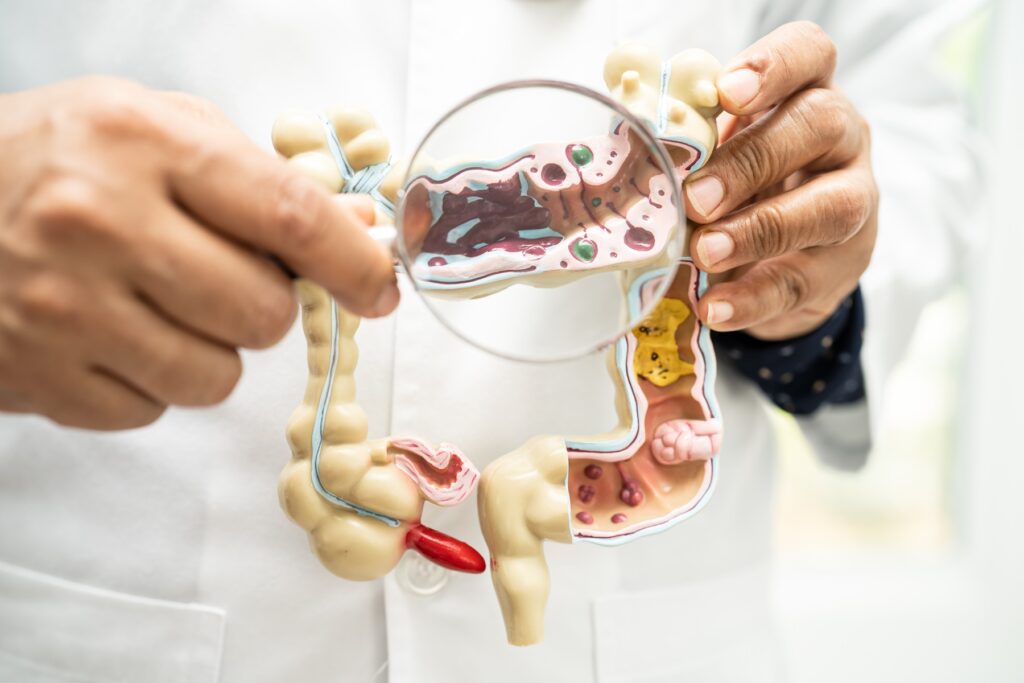it’s Emily here.
Most introductions to vaginal health start with symptoms and treatments. A better place to begin is the ecosystem itself: the vaginal microbiome. In healthy, reproductive-age women, this ecosystem is typically low in diversity and dominated by Lactobacillus species that keep the environment acidic and inhospitable to pathogens—one reason pH < 4.5 is a familiar hallmark of vaginal health. These Lactobacillus communities make lactic acid (and in some cases hydrogen peroxide and bacteriocins), lowering pH and helping limit the growth of anaerobes linked to bacterial vaginosis (BV). PMC
Community State Types (CSTs): the main patterns you’ll see
When researchers profile thousands of samples, they find that most vaginal communities fall into a handful of reproducible patterns called Community State Types (CSTs). Four of them are dominated by different Lactobacillus species—CST I (L. crispatus), CST II (L. gasseri), CST III (L. iners), CST V (L. jensenii)—and a fifth, CST IV, is Lactobacillus-depleted and enriched in diverse anaerobes such as Gardnerella, Atopobium/Fannyhessea, Prevotella, and others. CSTs aren’t diagnoses; they’re ecological “snapshots” that map to pH, symptoms, and risk in different ways. PNAS
Not all Lactobacillus are identical in function. L. crispatus, L. gasseri, and L. jensenii typically make both D- and L-lactic acid, while L. iners mainly produces L-lactic acid and carries a reduced stress-response toolbox. That biochemical difference may help explain why L. crispatus-dominated communities (CST I) often associate with the lowest pH and the most stable, “protective” profiles, whereas L. iners (CST III) is frequently observed in transitional states and after antibiotic exposure. PMC
CSTs also change over time. Across the menstrual cycle, community composition can shift with bleeding and estrogen fluctuations; pregnancy, postpartum, and menopause each bring their own microbial dynamics. Longitudinal studies show that some women remain remarkably stable, while others transition between states—especially into and out of CST IV—over weeks to months. PNAS
What shapes the vaginal microbiome—and how it varies across populations
Hormones and life stage. Estrogen supports glycogen deposition in vaginal epithelium; Lactobacillus ferment that glycogen into lactic acid, helping keep pH low. That’s why puberty (rising estrogen) and pregnancy (high estrogen) often favor Lactobacillus dominance, while perimenopause/menopause (declining estrogen) are linked to higher pH and more diverse, Lactobacillus-poor states unless estrogen is replaced. PMC+2PMC+2
Behaviors and exposures. A growing literature connects day-to-day choices and exposures with microbiome balance. Factors repeatedly implicated include:
- Antibiotics (broad disruption, sometimes followed by L. iners-heavy rebounds)
- Sexual activity and semen (temporary pH increases; partner microbiomes also matter)
- Smoking (associated with BV-linked communities)
- Intravaginal practices such as douching (consistently associated with dysbiosis)
- Contraception (hormonal methods can shift communities; copper IUDs may increase BV-associated taxa in some studies)
- Menses (blood transiently raises pH; communities often fluctuate during and after bleeding)
These associations don’t make any single factor “good” or “bad” for every person, but together they highlight how environment + behavior + hormones interact to shape the ecosystem. PMC+1
Population-level patterns. One of the most robust findings since the landmark Ravel et al. study is that the distribution of CSTs differs across racial and ethnic groups at the population level (with plenty of overlap among individuals). In North American cohorts, non-Lactobacillus-dominated communities (CST IV) occur more frequently in Black and Hispanic women than in White and Asian women; follow-up studies in other regions and multi-omics analyses echo these trends and highlight taxa such as Fannyhessea (Atopobium) vaginae as more prevalent in some groups. Mechanisms likely span host genetics, hormones, immunity, sexual networks, environment, and structural determinants of health; individual variation is large, and CSTs are not destiny. PNAS+2PMC+2
What “healthy” looks like in practice. Across studies, vaginal health most often corresponds to dominance of Lactobacillus (especially L. crispatus) with acidic pH and low anaerobic load. Communities depleted of Lactobacillus (CST IV) are not always symptomatic, but they correlate with higher pH and, in many studies, with greater risk for BV, STIs, adverse pregnancy outcomes, and post-treatment recurrence. These are probabilities, not guarantees—context (symptoms, exam, diagnostics) matters. PMC
Key takeaways (for clinicians, educators, and curious readers)
- Lactobacillus-dominant, low-pH ecosystems are the most common signature of vaginal health in reproductive-age women. PMC
- Five CSTs capture most community patterns; CST I (L. crispatus) tends to be the most acid-producing and stable, CST IV the most diverse and BV-like. PNAS
- Lactobacillus species differ, with L. crispatus/gasseri/jensenii producing D- and L-lactic acid and L. iners mainly L-lactic acid—differences that may influence resilience. PMC
- Hormones, contraception, sexual activity, smoking, douching, menses, and antibiotics are among the best-supported factors shaping communities over time. PMC+1
- Population differences in CST distributions are real at the group level but do not define individuals; care should be personalized. PNAS+2PMC+2
Further reading (open access)
- “The Female Vaginal Microbiome in Health and Bacterial Vaginosis” — comprehensive review. PMC
- Ravel et al., “Vaginal microbiome of reproductive-age women” — classic CST paper. PNAS
- Holdcroft et al., “The Vaginal Microbiome in Health and Disease—What Shapes It?” — concise review of determinants. PMC
This explainer is educational and not a diagnostic guide. If symptoms arise, clinical evaluation is essential.



